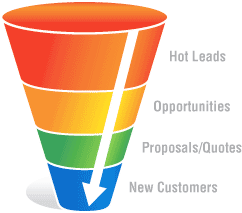Content Management & The Cloud. A Personal History.
I have a personal perspective on cloud content management that may be a little different than most. This brief, personal story illustrates why I think the business model of cloud is as important as the architecture. In the 90’s I worked for a company called Interleaf out of Boston. (Now Broadvision.) I held many positions with the company. I started as a trainer and technical consultant before jumping over to the dark side. I ran national marketing for Canada, then moved to Boston to run North American advertising.
This is where I learned one of the fundamentals of business. Not from what we did right, but from what we did wrong. I was hired right at the tail end of development of the campaign so I missed out on the fun part. When I looked at the plan from my inexperienced perspective, it was nuts. This was a multi-million dollar campaign and before it even launched, I was convinced it was going to fail. Unfortunately, the ball was rolling and gaining momentum and had sign-off from the CEO. No going back now.
The problem I saw, and didn’t fight hard enough to solve, was that the campaign was one dimensional. This campaign was a 3 month print ad campaign. It was a 2 page print ad to be placed across dozens of very expensive magazines. That’s it. Fortune, Forbes, Business Week…etc. and because we were spread so thin across a lot of expensive properties the ad only appeared once in each magazine and at most three times in a few of them. This was the “be-everywhere” model that got us nowhere. The bigger problem was that we didn’t have the fundamentals covered. We didn’t know who our customer was or where they hung out, but we went right to their bosses with an ad. We missed the mark and forgot the fundamentals.
After that experience I left the marketing department and headed over to the other, darker dark side. Sales. I felt like I was working for a completely separate company. The sales team was even in a different building from marketing. The sales team didn’t speak the same language and definitely didn’t echo the marketing messages. The campaigns that were running didn’t produce leads that the sales people could take action on. (again, the fundamentals were missing.) Few of the people in marketing knew the sales people and vice-versa, except by reputation. The marketing department missed the mark and forgot that the fundamental nature of marketing was to sell solutions to our customers problems.
I led the North American inside sales team before running the US Central & Canadian territory. Over the next couple of years, I earned several sales awards including the coveted ‘gold leaf’ presidents club award. (For a hungry guy trying to prove himself, this was a big deal.) How did I do it? Fundamentals. I knew the strategic direction the company wanted to take from my time in Marketing and had first hand experience with the customers pain from training them and onsite consulting. I was my own cross functional solution team. I saw first hand how important the solution was to their business and what happened if things failed. I figured a way to hack together my message with the corporate message and convey it to customers in their language. Not ours. The leads didn’t come in from marketing, so I had to hunt for them myself. Our customer base was the richest source of opportunities, however, what put me over the top was the new business I brought in. I followed a pretty straight forward, common sense approach to sales, cut and paste from the plethora of sales training programs I was subjected to. Here’s my sales methodology*;
- know who will and can buy and why (follow the pain)
- who needs to be involved in making the decision (follow the money)
- know what the criteria for them to make a decision
- know how to find them
- be a real person, reach out and talk to them (help them buy)
- know when you can win, walk away if you can’t
In other words, know your market and the pain that drives people to spend money for a solution. I also learned to lose fast.
The Birth of Document Management | Interleaf was known for their technical publishing software (Interleaf 5 and 6 at the time) that ran on Unix and later PC. Because the documents our clients were creating were quite complex, we needed to provide them with ways to manage the documents and the Document Management industry was born. (It was a relational document management system sitting on an Oracle database, they called it RDM…very creative!) This was a fundamental that Interleaf got right. They listened to their customers and filled a need they were willing to pay for.
There was a real excitement over the future of document management and one of the most exciting times came when a developer web enabled RDM and our viewer technology called WorldView. (Way better than Adobe Acrobat at the time but Adobe decided to give away their viewer for free… well played Adobe. Well played.) This was in the heyday of Netscape and we called this web enabled viewer of business documents “Business Web”.
We went after our base and began selling. It was early, bleeding edge, but still garnered purchase orders. I began packaging services with the license and branded it the Business Web Starter Kit to get early adopters. It worked and at $50K a deal, we started doing quite well. Not mainstream success, but validated a need. I got more creative because I had to hit my quota. Working with GE Capital, I started offering customers a way to lease the licenses and roll in the services over 3 years. This approach brought PO’s from a few key accounts that had stalled. Then as objections arose around implementation, we began hosting business webs for clients who paid an annual license fee plus ‘maintenance’. We were able to secure a few clients before the wheels began to fall off at Interleaf and RDM was re-branded Quicksilver and the company sold to Broadvision.
Looking back on that time in the late nineties, I realize that it we had created a business model that made sense, but the technology was too bleeding edge at the time, and not mature enough to succeed. Most companies in the document/content management space eventually went to a hosted or ASP model by the mid 2000’s and Salesforce.com and Amazon matured the business model while addressing the security, performance and support aspects that made software-as-a-service (SaaS) mainstream and branded as “the cloud.” The technology was great, but it was the business model that made the biggest difference. We focused on the fundamentals and listened to our clients. They wanted to try bleeding edge technology to prove concepts and move the business further faster (one of our tag lines) but had limited capital budgets. By changing the business model, we tapped into operating expense budgets and reduced the friction of the sale.
So, now Dropbox, Box.net, Mozy, iDrive, SkyDrive and the thousands of other cloud content management solutions should take a moment and tip their hats to Interleaf, the grand daddy of cloud content management.
 Why do fresh & shiny new systems fail? People. People suck! They don’t do what you want them to. They don’t follow instructions or read manuals. They can’t follow simple processes because they say they are “too busy ” well, get over it. Seriously. Please get over it. It’s time to admit you have a problem and that problem is people.
Why do fresh & shiny new systems fail? People. People suck! They don’t do what you want them to. They don’t follow instructions or read manuals. They can’t follow simple processes because they say they are “too busy ” well, get over it. Seriously. Please get over it. It’s time to admit you have a problem and that problem is people.






